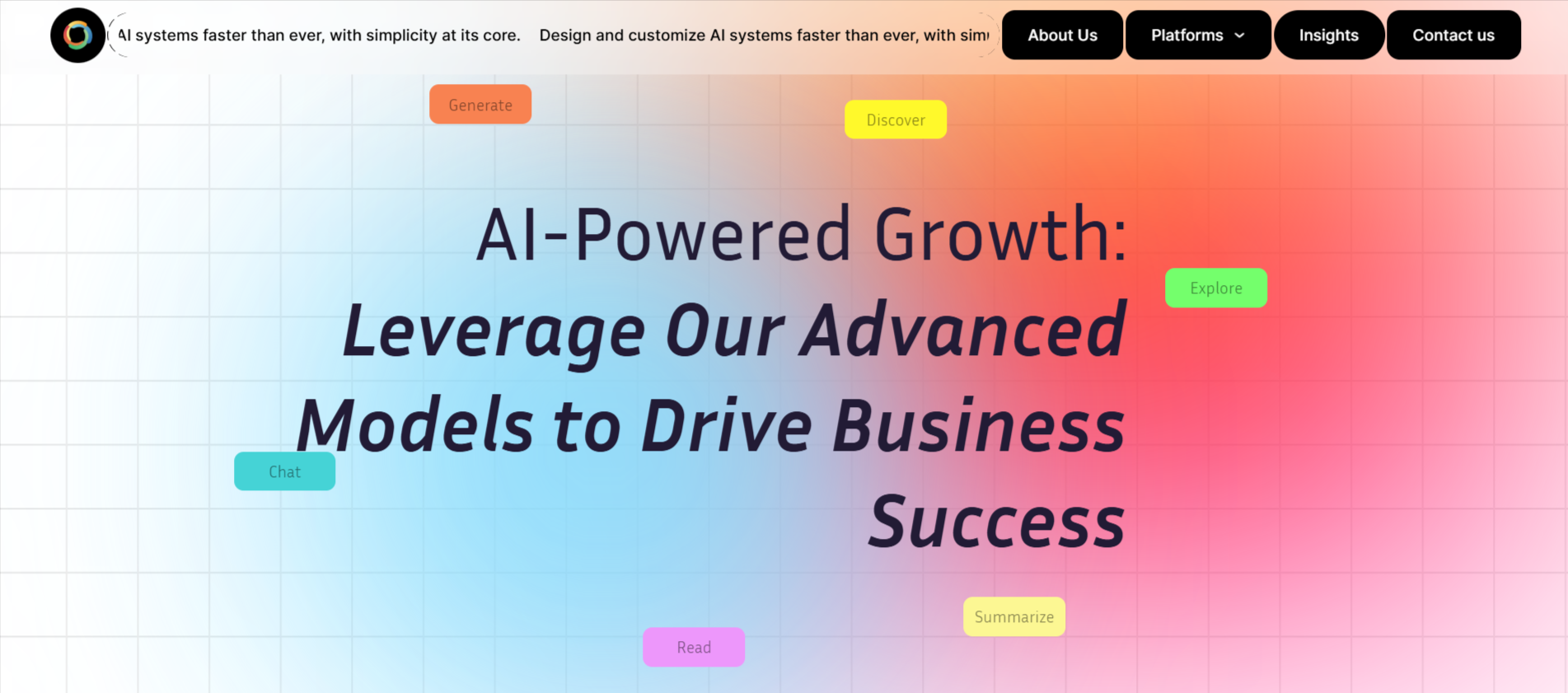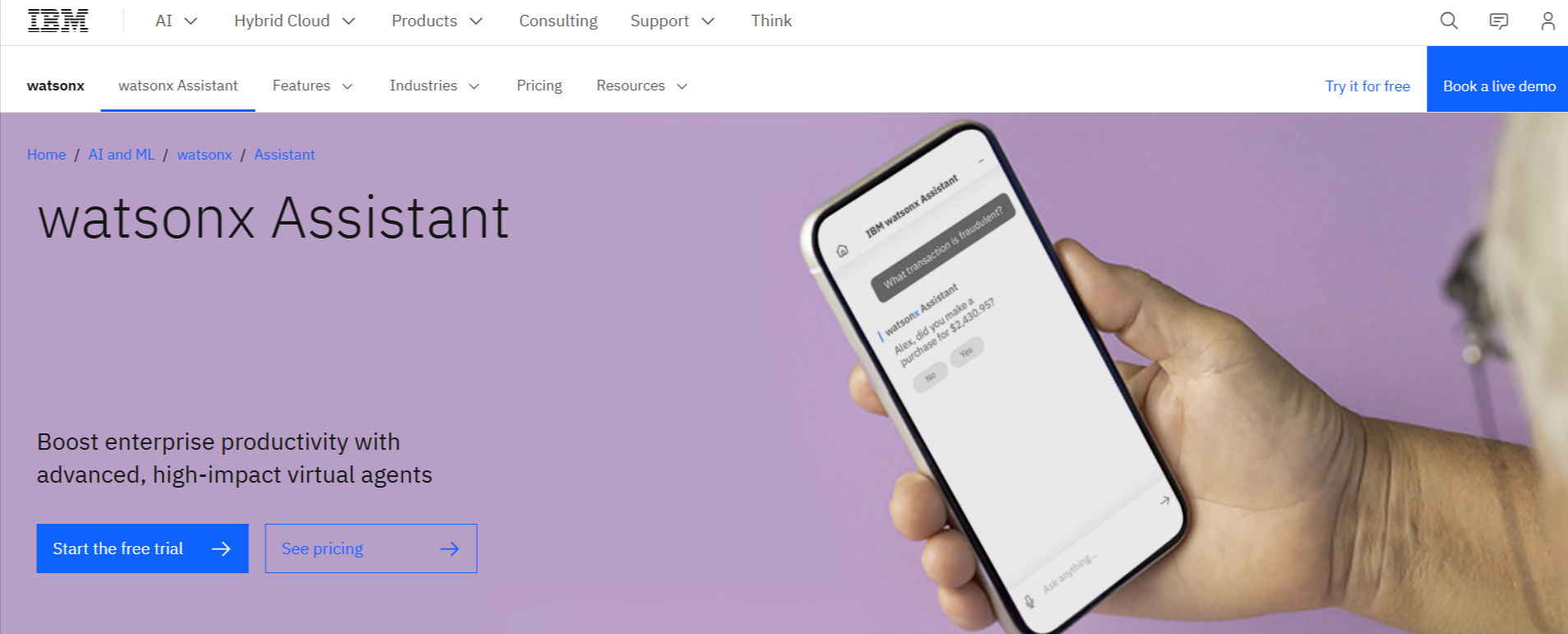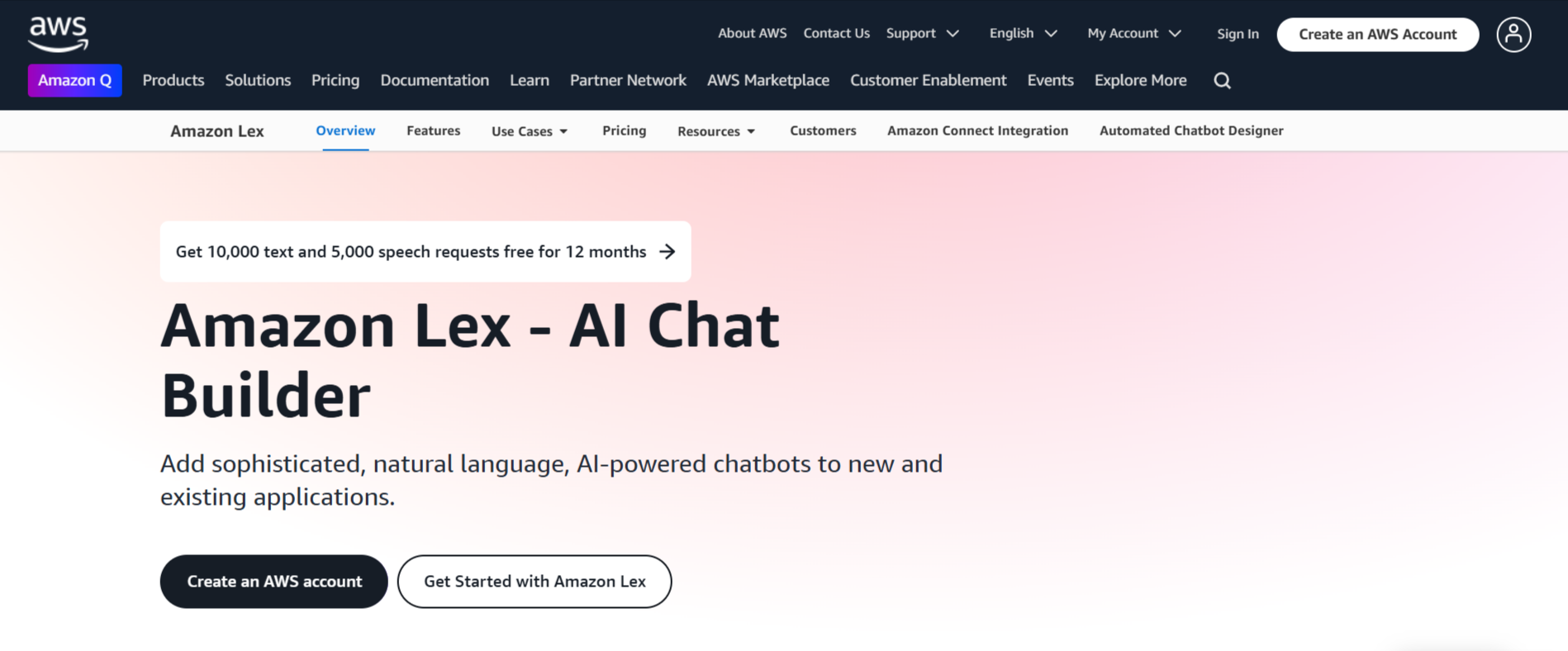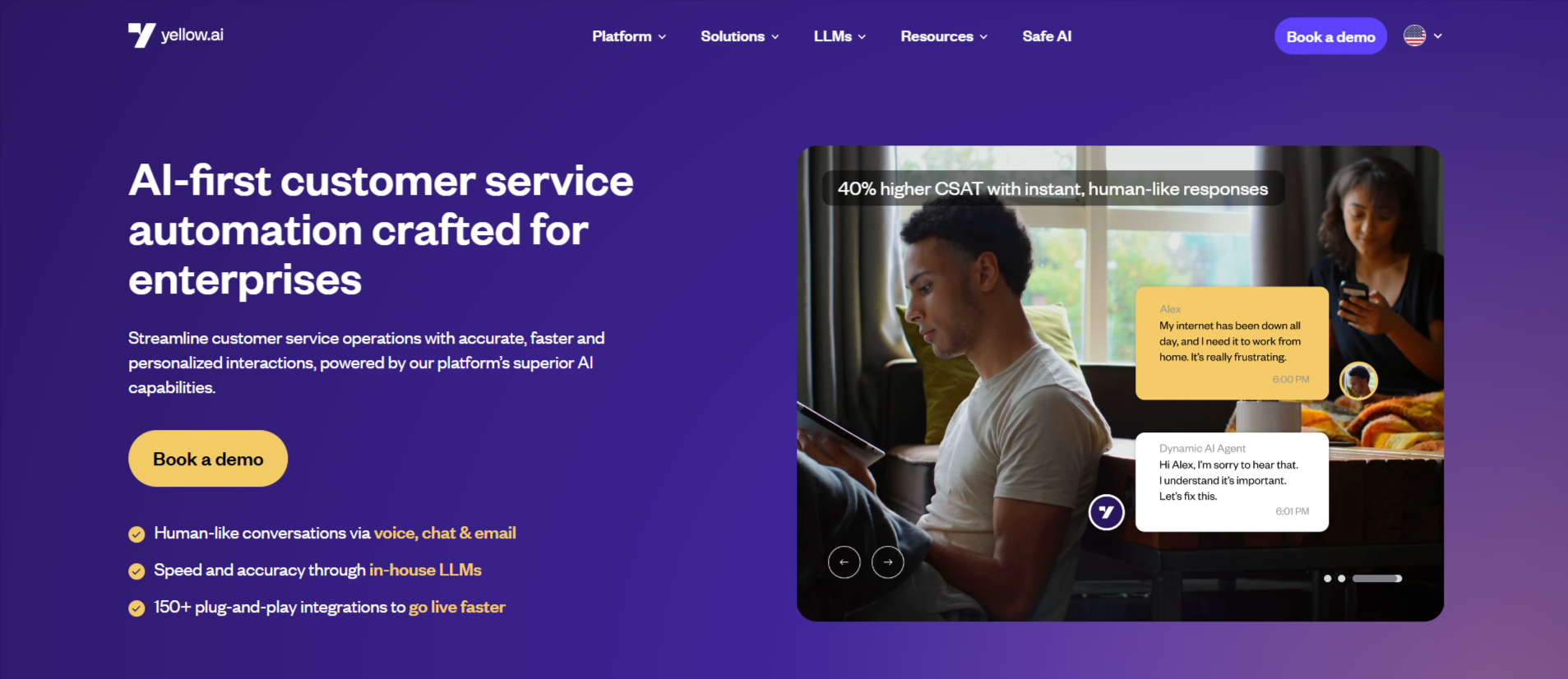Top Conversational AI Platforms: Your Guide to Smart Business Solutions

Conversational AI platforms have emerged as a transformative force for businesses across industries in 2025. With rising expectations for instant, precise, and tailored customer interactions, AI chatbots have shifted from being optional to essential. Today’s consumers demand effortless engagement across diverse channels—think websites, mobile apps, messaging platforms, and even augmented reality interfaces.
AI-powered chatbots and virtual assistants empower businesses to scale customer service, automate mundane tasks, and elevate user engagement. From resolving inquiries to delivering predictive recommendations, these platforms are reshaping customer-business dynamics.
The surge in demand for advanced AI conversational solutions stems from:
- All-Hours Availability – AI chatbots provide uninterrupted support, no human required.
- Scalability – Handle millions of interactions concurrently, adapting to peak loads.
- Resource Optimization – Slash operational costs by minimizing dependence on expansive support teams while boosting service quality.
- Personalization – Deliver responses fine-tuned to user data, preferences, and real-time behavior.
- Multilingual Support – Engage global audiences with real-time language translation.
- Proactive Engagement – Anticipate needs and initiate conversations based on user patterns.
As technology races forward, businesses leveraging cutting-edge conversational AI in 2025 will secure a competitive advantage; think lightning-fast responses, sky-high customer satisfaction, and streamlined operations.
How AI Chatbots Are Redefining Customer Interactions
AI chatbots have outgrown their scripted roots. In 2025, they harness Natural Language Processing (NLP), Machine Learning (ML), and even emotion-aware AI to decode user intent, gauge sentiment, and craft spot-on responses. Far beyond customer service, these platforms are revolutionizing sales, marketing, HR, IT support, and even employee onboarding.
Key ways AI chatbots are transforming interactions:
- Context-Aware Conversations – Retain memory of past exchanges for a fluid, human-like experience.
- Omnichannel Integration – Engage seamlessly across websites, apps, social media, voice assistants, and AR/VR platforms.
- Advanced AI Training – Self-improve through user interactions, sharpening accuracy and relevance.
- Industry-Specific Solutions – Deploy tailored models for sectors like healthcare (patient triage), finance (fraud detection), and e-commerce (dynamic pricing).
- Emotion Detection – Adjust tone and responses based on user mood, enhancing empathy.
- Predictive Analytics – Forecast user needs and offer solutions before questions arise.
By embedding conversational AI, businesses streamline workflows, amplify engagement, and craft frictionless experiences that fuel loyalty and retention in today’s hyper-connected world.
What Are AI Conversational Platforms & How Do They Work?
Conversational AI platforms are sophisticated systems enabling human-like exchanges between users and machines. Powered by Artificial Intelligence (AI), Machine Learning (ML), and Natural Language Processing (NLP), they process and respond to queries in real time, adapting to diverse inputs.
How They Work
- User Input: AI systems can accept various forms of input, including text (typed queries or messages), voice (spoken commands), and even visual data (images, videos, or scanned documents). Advanced AI models can process multimodal inputs, allowing seamless interaction across different media types.
- Natural Language Understanding (NLU): Once the input is received, the AI system analyzes it using Natural Language Processing (NLP) techniques. This step involves identifying the user's intent (what they want to achieve), understanding context (previous interactions, tone, and phrasing), and recognizing nuances like sentiment or implied meaning. For visual inputs, the system may apply image recognition, object detection, or OCR (Optical Character Recognition) to extract relevant data.
- Response Generation: Based on the interpreted input, the AI system generates an appropriate response. It may retrieve relevant information from structured databases, pre-existing knowledge repositories, or external sources (such as the internet). Alternatively, if required, it can generate responses dynamically using AI-driven models, like large language models (LLMs) that create human-like text. Some systems also personalize responses based on prior interactions.
- User Engagement: The system then delivers its response in a conversational and natural manner, whether through text, synthesized voice, or visual content. Over time, it refines interactions by learning from user feedback, adjusting its responses to improve accuracy, relevance, and personalization. AI-driven assistants may also employ memory retention, sentiment analysis, or reinforcement learning to enhance future engagements.
These platforms drive customer service, sales automation, internal support, and predictive insights, cementing their role in the digital transformation strategies.
Key Technologies Behind AI Chatbots
Conversational AI thrives on a suite of advanced technologies delivering smart, real-time interactions. Here’s a more structured and meaningful revision of your section:
1. Retrieval-Augmented Generation (RAG)
Traditional AI models rely on static datasets, but RAG enhances response quality by retrieving real-time information from external sources before generating an answer. It ensures:
- Precision: Retrieves verified data from trusted sources such as company records, databases, or web searches, reducing misinformation.
- Freshness: Ensures up-to-date responses, essential in fast-evolving fields like news, finance, and technology.
- Context Mastery: Seamlessly integrates retrieved facts with generative AI, delivering nuanced and informed responses.
2. Large Language Models (LLMs)
Next-generation LLMs, like GPT-5 and Google Gemini 2.0, leverage vast 2025-era datasets to power chatbots with advanced:
- Language comprehension – Understanding complex queries with contextual awareness.
- Context retention – Remembering previous interactions for smoother conversations.
- Conversational fluency – Generating human-like responses with improved coherence.
3. Natural Language Processing (NLP)
NLP enables AI to interpret and respond to human language naturally by employing:
- Intent Recognition – Identifies user goals (e.g., booking a flight, troubleshooting a device).
- Entity Extraction – Extracts key details like dates, product names, or locations.
- Sentiment Analysis – Detects emotions (positive, negative, neutral) to tailor responses accordingly.
4. Machine Learning (ML)
ML fuels AI’s continuous improvement, allowing models to refine accuracy and predict user needs through:
- Adaptive learning – AI learns from past interactions to improve future responses.
- Personalization – Tailors recommendations based on user preferences and behavior.
- Error correction – Identifies and adjusts inaccuracies over time.
5. Multimodal AI
A breakthrough in 2025, Multimodal AI processes multiple input types, expanding chatbot capabilities beyond text. It can:
- Analyze text and speech – Understand and respond to both written and spoken queries.
- Process images and video – Recognize faces, objects, and visual context for richer interactions.
- Interpret structured data – Handle spreadsheets, charts, and other formats for business applications.
Together, these technologies enable complex, adaptive interactions, automating tasks and delivering real-time support across industries.
Leading Advanced AI Conversational Platforms
1. Meii AI

Meii AI provides enterprises with a powerful, AI-driven platform designed for automated customer support, personalized engagement, and scalable business solutions. By integrating advanced NLP, machine learning, and multimodal capabilities, it enhances efficiency, accuracy, and responsiveness, ensuring seamless interactions across web, mobile, voice assistants, and emerging digital ecosystems.
Why Choose Meii AI?
Smart Conversations : AI-driven discovery and insights elevate every exchange.
RAG Precision : Context-aware, accurate responses that evolve dynamically.
Advanced Models : Semantic search speeds up relevant info delivery.
Deep Nuance : Detects tone and industry-specific subtleties.
Top-Tier Security : 100% data protection with compliance focus.
No-Code Ease : Drag-and-drop design with templates
2. IBM WatsonX

IBM WatsonX powers intelligent virtual agents with advanced AI, machine learning, and NLP, enabling seamless self-service automation. It scales effortlessly to handle complex queries, enhances customer interactions, and integrates across various digital touchpoints, ensuring efficient, responsive, and AI-driven conversational experiences.
Why Choose IBM WatsonX?
No-Code Ease : Drag-and-drop design with templates.
AI Powerhouse : LLMs, speech models, NLP, and NLU for natural replies.
Reliable Answers : RAG taps enterprise data for up-to-date responses.
3. Amazon Lex

Amazon Lex seamlessly integrates chat and voice AI into applications, enabling natural conversations, automated workflows, and enhanced user experiences. It leverages AWS’s powerful AI services to provide scalable, secure, and efficient chatbot and voice assistant solutions for businesses across industries.
Why Choose Amazon Lex?
Scalable Security : Generative AI with enterprise-grade protection.
Omnichannel Reach : Consistent engagement across platforms.
Rapid Deployment : Quick automation for faster market entry.
4. Yellow.ai

Yellow.ai empowers enterprises with AI-driven, fast, and personalized automation, enhancing customer engagement and operational efficiency. Its conversational AI platform integrates seamlessly across chat, voice, and digital channels, delivering scalable, intelligent, and human-like interactions for businesses worldwide.
Why Choose Yellow.ai?
Seamless Support : Quick, tailored customer experiences.
Agent Empowerment : AI handles routine tasks, agents tackle complexity.
Data Insights : Actionable analytics for smarter decisions.
How to Choose the Right Conversational AI Platform for Your Business?
The right conversational AI platform must align with your business needs, ensuring seamless interactions, security, and long-term value. Here are the critical factors to evaluate:
1. Scalability – Can It Handle Growing Demand?
As user engagement fluctuates, the AI platform must:
- Support high traffic loads – Preventing slow responses or crashes during peak usage.
- Scale dynamically – Leveraging cloud-based infrastructure to adjust capacity on demand.
- Maintain low latency – Ensuring real-time responsiveness, even under heavy workloads.
2. Security & Compliance – How Well Does It Protect Data?
With rising concerns about privacy and data breaches, the platform should:
- Offer end-to-end encryption – Protecting sensitive conversations from unauthorized access.
- Comply with global regulations – Adhering to GDPR, CCPA, HIPAA, and other data protection laws.
- Enable role-based access – Allowing granular control over data access and AI interactions.
3. Customization & Integration – Can It Adapt to Your Needs?
A flexible AI platform should:
- Allow fine-tuning – Adjusting the model’s responses, tone, and knowledge base.
- Support API integrations – Connecting with CRM systems, e-commerce platforms, and customer support tools.
- Facilitate industry-specific workflows – Tailoring AI behavior for healthcare, finance, retail, or other sectors.
4. Multimodal Capability – Can It Handle More Than Just Text?
2025’s AI landscape demands platforms that go beyond text-based chatbots by:
- Processing voice commands – Offering hands-free interaction for accessibility and efficiency.
- Interpreting images & videos – Recognizing visual content for e-commerce, security, and diagnostics.
- Handling structured data – Understanding spreadsheets, reports, and technical documents.
5. Sustainability & Energy Efficiency – Is It Environmentally Responsible?
As AI adoption grows, energy consumption becomes a major concern. A future-proof platform should:
- Optimize computational efficiency – Reducing energy-intensive AI processes without sacrificing performance.
- Leverage green data centers – Partnering with cloud providers using renewable energy.
- Support eco-conscious AI models – Utilizing efficient algorithms that lower carbon footprints.
A platform excelling in scalability, security, customization, multimodal AI, and sustainability ensures long-term reliability, regulatory compliance, and adaptability in an evolving digital landscape. Choosing wisely today means future-proofing your AI investment for the demands of tomorrow.
To Wrap Up
As businesses embrace AI-driven transformation, choosing the right conversational AI platform is crucial for scalability, efficiency, and customer engagement. Solutions like Meii AI, IBM WatsonX, Amazon Lex, and Yellow.ai showcase the power of automation, enhancing self-service, streamlining workflows, and personalizing interactions across multiple channels.
By investing in the right AI-powered solutions, enterprises can future-proof their operations, optimize customer experiences, and stay ahead in an increasingly digital and automated world.
Which is the best Conversational AI?
No one-size-fits-all. However, there are a few top picks like Meii AI, IBM WatsonX, Amazon Lex, and Yellow.ai that one can choose to fit the requirements (e.g., security, ease of use).
How can Conversational AI improve customer experience?
Conversational AI offers 24/7 support, personalization, emotion-aware responses, and proactive help, driving satisfaction and loyalty.
What is the difference between rule-based chatbots and AI-powered chatbots?
Rule-based bots follow rigid scripts; AI-powered ones use NLP and ML for adaptive, natural dialogue.
Can Conversational AI handle images, documents, or structured data?
Yes, modern conversational AI platforms leverage multimodal AI to process diverse inputs, including text, images, PDFs, and structured data like CSVs or spreadsheets. This enables advanced applications such as visual recognition, document analysis, and data-driven conversational insights.
Does Conversational AI work on websites, mobile apps, and voice assistants?
Yes, conversational AI seamlessly integrates with websites, mobile apps, and voice assistants, as well as social media, AR/VR, and IoT devices, enabling a fully connected, omnichannel user experience.

